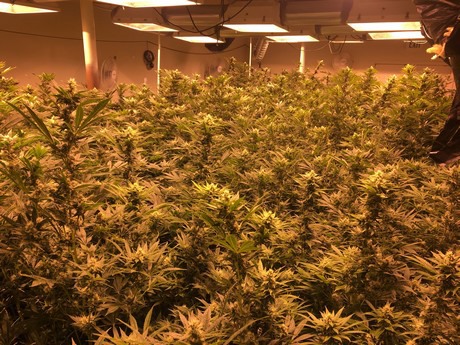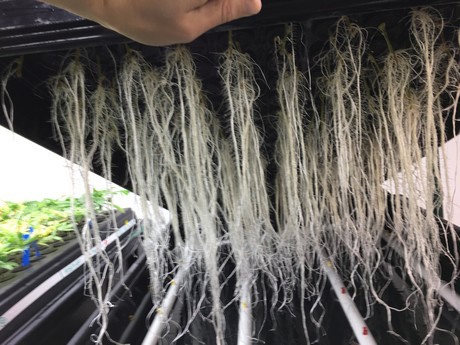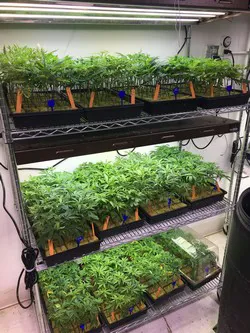Running a successful cannabis operation poses many challenges. Manufacturing a product at scale while keeping the cost low requires a high degree of efficiency. This is why it is of the utmost importance to rely on data, in order to have under control each and every aspect that makes up said operation. Max Cranford with Crannabis Consulting is very much aware of that. “One of the biggest issues for large-scale grows stems from the mentality of expanding the processes that were carried out in illegal and definitely smaller settings,” he says. “When people started scaling up, they realized that the old methodology doesn’t work well, especially with regards to workflow and tech that might need to be added.”
 Maxwell Cranford
Maxwell Cranford
A fast-paced sector
According to Max, when you scale up, things go quite fast, and thus it is of the utmost importance to be able to have everything under control. “Surely every grower is different,” he says. “But some of them have a lot of pride about what they do and how they do it. They have been doing it for a very long time, and there is an emotional investment in this plant. But in such a fast-paced and competitive market, it’s crucial to have an open mind and be able to adapt. I think that open-minded people, open to new ideas, really tend to flourish over proud people.”
The 6 sigma
In order to improve the efficiency of an operation, Max utilizes the 6 sigma. “To put it bluntly, it is a program that was officially developed in the late 1980s, and it has been used by some of the biggest companies, such as Ford or IBM,” he explains. “The program basically analyzes foundational data to see where inefficiencies and variations are in order to reduce said variation. In this way, you will have improved work morale, more consistent output, and less wasted cost.”

When it comes to large-scale manufacturing, such a program may help companies to improve many aspects of the operation. “Even though we are talking cultivation and growing, you should be able to know the expected deficiencies, thus predicting the variations,” he continues. “If you consider that you are using the same equipment, nutrients, genetics, and methodology all the time, you can reduce variations in the output by analyzing your foundational data.” That’s why Max gathers data not only from the equipment, but also from employees. “For instance, I will have a sheet stating the name of the employee, associated with a number, and the task he was given. By taking all that information and doing that for every activity, you can see how efficiently your employees work. Then, you take all of that data and compare by a sigma, that is, a standard.”
Reducing inefficiencies during the harvest and post-harvest
When it comes to cutting down inefficiencies, the harvest and post-harvest processes are surely the most overlooked ones. “This is because there is less written about it in science,” he observes. “At the same time, a lot of growers understand that messing up with post-harvesting is like tripping on the finish line. I feel it is definitely something that is getting prioritized, but it could be given a bit more love.”

“First, it is crucial to be sure that your harvest process is really streamlined,” he remarks. “Be sure that each of your employees has a job and doesn’t have to move around a lot, so that the line works really well. Once your harvest is in the drying room, the ideal temperature should stand between 60 to 70 Fahrenheit with 45-55% of humidity. At the same time, it is important to understand the climate of the location your operation is based off. Here in Colorado, we live in a desert climate, so we keep in mind that plants dry out faster than in other places here in the US. There’s more humidity here; so, make sure to have a dehumidifier and humidity stats: many people are actually thinking this way.”
 On the other hand, Max says that there is still a controversy when it comes to post-harvesting. “The discussion is about whether hand trimming or machine trimming is better. I believe that if you want to do hand trimming, be sure that your profit margins reflect as much. But do keep in mind that machine trimming saves up a lot of time, and you want to calculate the savings regarding both hand and machine trimming. The last part of the post-harvest is the curing, which releases the last tad of terpenes. Make sure that flowers are in the darkness, and it’s not hot, otherwise they could develop molds.”
On the other hand, Max says that there is still a controversy when it comes to post-harvesting. “The discussion is about whether hand trimming or machine trimming is better. I believe that if you want to do hand trimming, be sure that your profit margins reflect as much. But do keep in mind that machine trimming saves up a lot of time, and you want to calculate the savings regarding both hand and machine trimming. The last part of the post-harvest is the curing, which releases the last tad of terpenes. Make sure that flowers are in the darkness, and it’s not hot, otherwise they could develop molds.”
For more information:
Crannabis Consulting
[email protected]
crannabiscolorado.com
